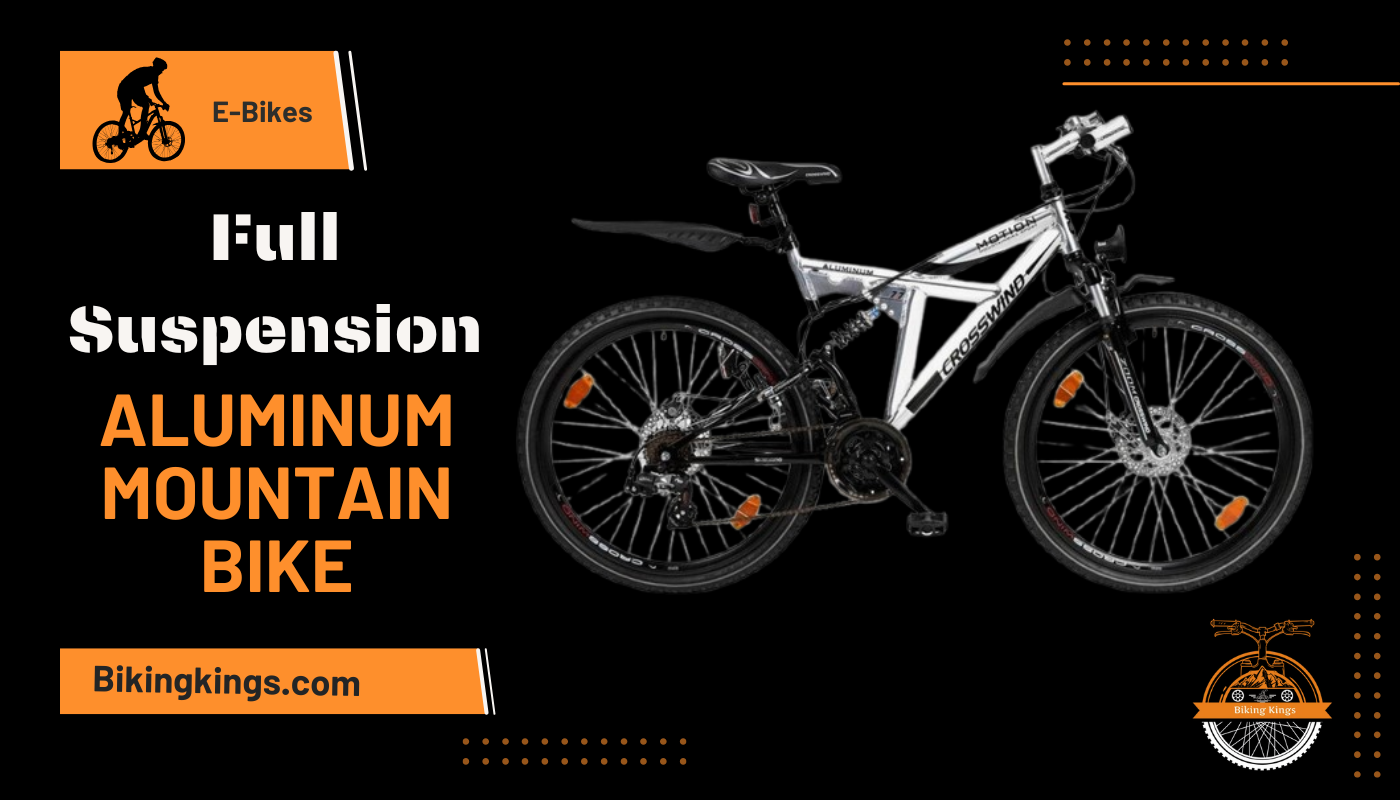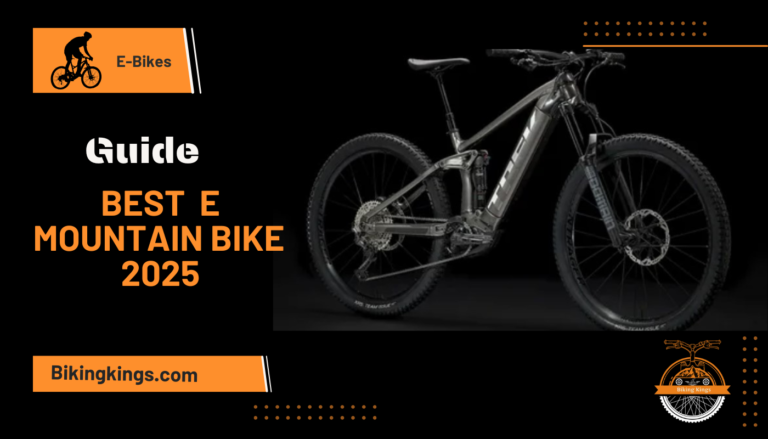To the new rider and the experienced one, strength, weight, and affordability come together with this combination. The main features and benefits of full suspension aluminum mountain bikes are discussed in this guide to enable you to understand the different systems involved, key components, and what you should look for when choosing the right one. Whether you’re gliding on strewn trails or dropping down a steep slope, a full suspension aluminum bike affords the rider much more stability and comfort.
Components Full Suspension Aluminum
They feature strictly off-road wheels and tires designed to give you the grip and stability required on rough terrains. Brakes, normally hydraulic disc brakes, provide excellent stopping power across the different weather conditions. Lastly, cockpit elements like the handlebar, stem, and saddle give comfort and control while allowing the rider to find their optimal position for taking on tougher trails.
Benefits of Aluminum Frames
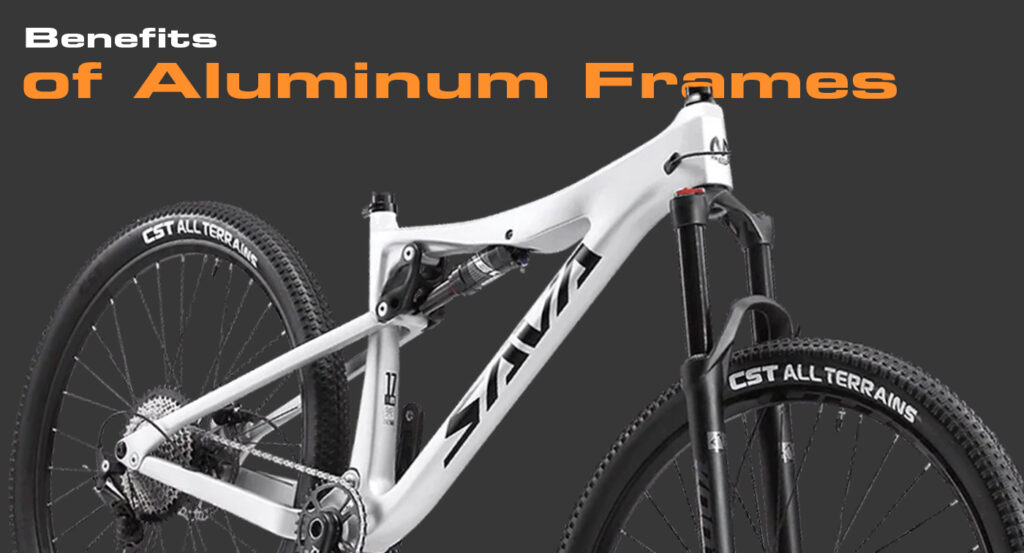
An aluminum frame for mountain bikes has come as one of the alternatives today, for its unique feature combining lightness, durability, and affordability. Another plus point of having an aluminum frame is that it does not easily rust and resist corrosion; hence, they are ideal for riding through wet and muddy conditions. Aluminum is stiffer than other materials as well, which translates to better power transfer and more efficient climbing.
Because of their lightweight nature, these materials are easy to carry, mainly on uphill sections. Aluminum is also a cheap material; therefore, it gives an affordable price but does not compromise on quality and performance. Also, such strength to weight ratio is highly beneficial for mountain bikers who require a reliable frame for fighting rough terrain. So, whether you are the casual rider or enthusiast, an aluminum frame is perfect in terms of great balance between performance and value.
How Does Full Suspension Improve Mountain Biking Performance?
Full suspension mountain bikes greatly enhance performance since they provide more grip and control on the ground, especially on uneven grounds. The suspension takes in the shock caused by such uneven grounds, meaning that at all times, both tires are in constant contact with the surface. A consequence of all this is better grip and stability on the ride, especially uphill or downhill. Moreover, full suspension reduces body impacts on a rider; therefore, a comfortable long ride is assured, and it remains free from fatigue.
This allows the riders to have more confidence in the ride over technical sections because the bike remains firmer and more stable over roots, rocks, and other obstacles. Flexibility in terms of suspension settings can be used to fine-tune a rider’s ride to reach appropriate performance on the road or trail conditions. Full suspension therefore develops handling, comfort, and control-very important elements on tougher trails-thus may be necessary in order to achieve greater general biking efficiency.
Different Types of Full Suspension Systems
Advanced systems feature the “virtual pivot point” (VPP), providing a better efficiency in pedaling while still giving all of the advantage of full suspension. ABP, or “active braking pivot,” is used in more advanced systems, based on high-end bikes, maintaining suspension efficacy while braking. Each has its advantages, and the best choice is highly dependent on riding style, terrain, and personal rider preferences.
ℹ️ Be cautious with your assistance use on hazardous technical sections – the bike’s heavyweight, combined with its immense power, could lead to a nasty accident if you aren’t careful or don’t have the strength to cope with it.
What Should I Look for When Choosing a Full Suspension Aluminum Mountain Bike?
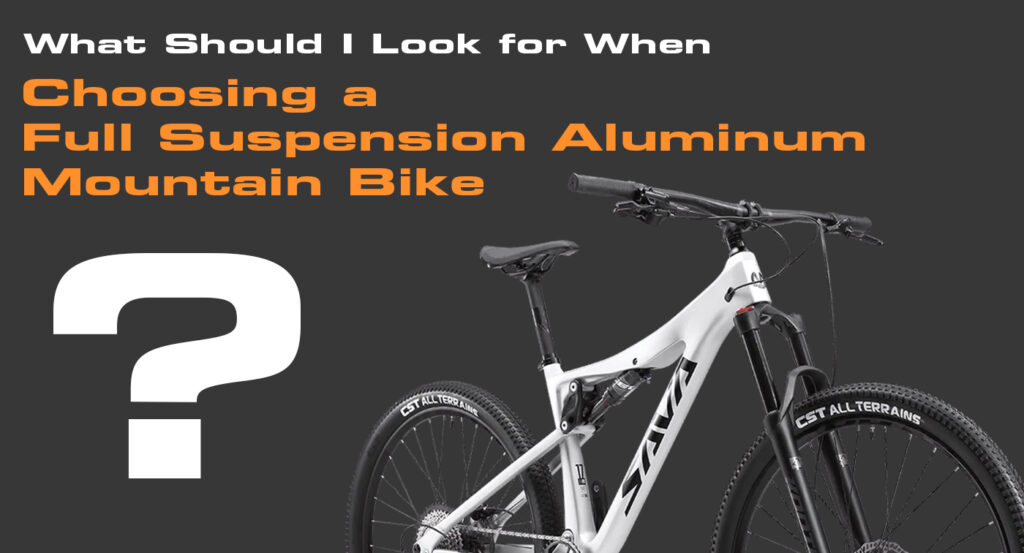
A full suspension aluminium mountain bike should be selected based on the following: the suspension system itself needs to have an adjustable setup so that you can fine-tune your ride for specific terrain requirements and personal preferences; the frame size must match the height of the rider along with the riding style so as to have optimum control and comfort. From time to time, check the bike for its essential components such as drivetrain, brakes, and wheels for these will determine the best performance of your bike.
Thirdly, the weight of the bike should also be taken into consideration, since the lighter it is, the more easily dealt with it will be, especially on climbs. Lastly, take into consideration the kind of trails you will be tackling-in other words, the rougher and more technical they are, the more travel (suspension distance) you want for better shock absorption.
Is a Full Suspension Aluminum Mountain Bike Suitable for Beginners?
Though aluminum is light in nature, these bikes are less cumbersome and come with high durability, allowing them to stand even the roughest of climatic conditions. However, one must keep in mind that beginners need to take care of their purse also because an aluminum full suspension bike requires much maintenance as compared to the easier variant. In summary, being comfortable, in control, and much more durable, full suspension aluminum bikes are perfect for new riders.
Aluminium vs Carbon Full Suspension MTB
While carbon frames are stiffer and provide a smoother ride due to better dampening of road vibrations, they are typically more expensive and also more prone to damage due to impacts. Aluminum is a great option if the carbon offers weight advantages, due to the safety it provides across the range of conditions, at a relatively low cost. Ultimately, preference will depend on rider requirements, budget, and other performance requirements.
Hardtail or Full-Suspension: Advantages and Disadvantages
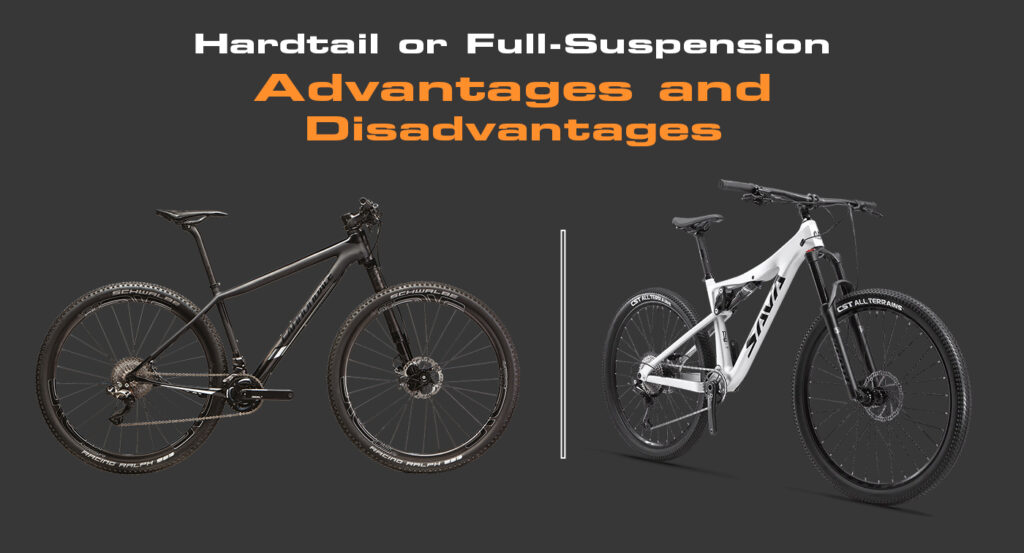
Select your riding style-between a hardtail mountain bike and full suspension. A hardtail is a mountain bike with a suspension at only its front wheel, the back wheel and frame are solid and not supported by suspension. A hardtail is lighter, simpler in construction, and hence less to maintain; thereby providing a good ride on smooth trails or cross-country riding. It is also less expensive than a full-suspension model.
Full suspension, with suspension at both the front and rear, delivers much better control and comfort over rough terrains, but weighs more and is a pain in maintenance. Full suspension does deliver a better follow-through in technical trails compared with suspension only at the front end. However, the extra complexity and cost may not be necessary for beginners or those sticking to smoother paths. Both types have their pros and cons, which depend on the style of rider as well as preferred terrain.
Which Is Best for Me
In case you prefer easier trails, cross-country riding, or if you prefer climbing performance, then a hardtail bike would be more proper for use. Hardtails tend to be lighter and demand less upkeep and are inexpensive as well. It makes them pretty appropriate for novices or riders on a shoestring budget. Your choice should be defined by the type of riding you’d enjoy most.
How Does Rider Weight and Height Affect Bike Performance?
The ride of the mountain bike is also a big role of the rider’s weight and height, especially in terms of how the bike’s performance goes across several terrains. Heavier riders will demand bikes with stronger components, especially the suspension system to make it handle with the weight. Preload and rebound suspension settings must also be set for the rider’s weight for best performance.
But at the same time, a tall rider will have to need large frame size, and short riders will require smaller frame sizes for proper fitting control. A well-fitting bike will assure better handling, comfort, and efficiency. Furthermore, when it comes to rider weight it will impact on how high the tire pressure will be set and the way braking happens. Proper bike adjustment will therefore ensure a smoother and safer ride.
How to Prepare a Custom Full Suspension Mountain Bike
Select a drivetrain offering a wide range of gears for all types of riding and climbing and descending situations, with wheels as tough, yet lightweight, as possible to withstand whatever terrain you ride on. Brakes, preferably hydraulic disc brakes, should provide great braking power in all conditions. Finally, customize the cockpit components like handlebars, saddle, and grips for the best comfort and control with every ride.
Final Thoughts
Full suspension aluminum mountain bikes provide versatile, high-performance options for the confident comfort of challenging trails. Based on an aluminum frame that is light and strong, this bike is given an excellent balance of durability and handling at an affordable price. Perfect for both beginners and experts, these bikes can significantly enhance off-road riding with control, grip, and ride quality. To get the best out of an aluminum mountain bike, that is full suspension, or to make the most out of it, you need to understand what the suspension types are, the major components, and how to set up and get the tuning right for your bike.

